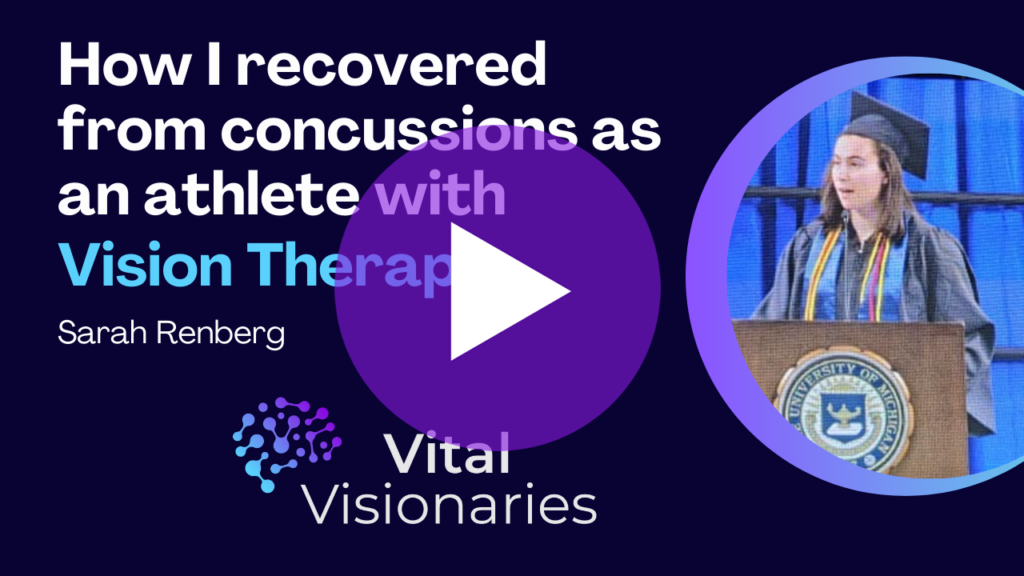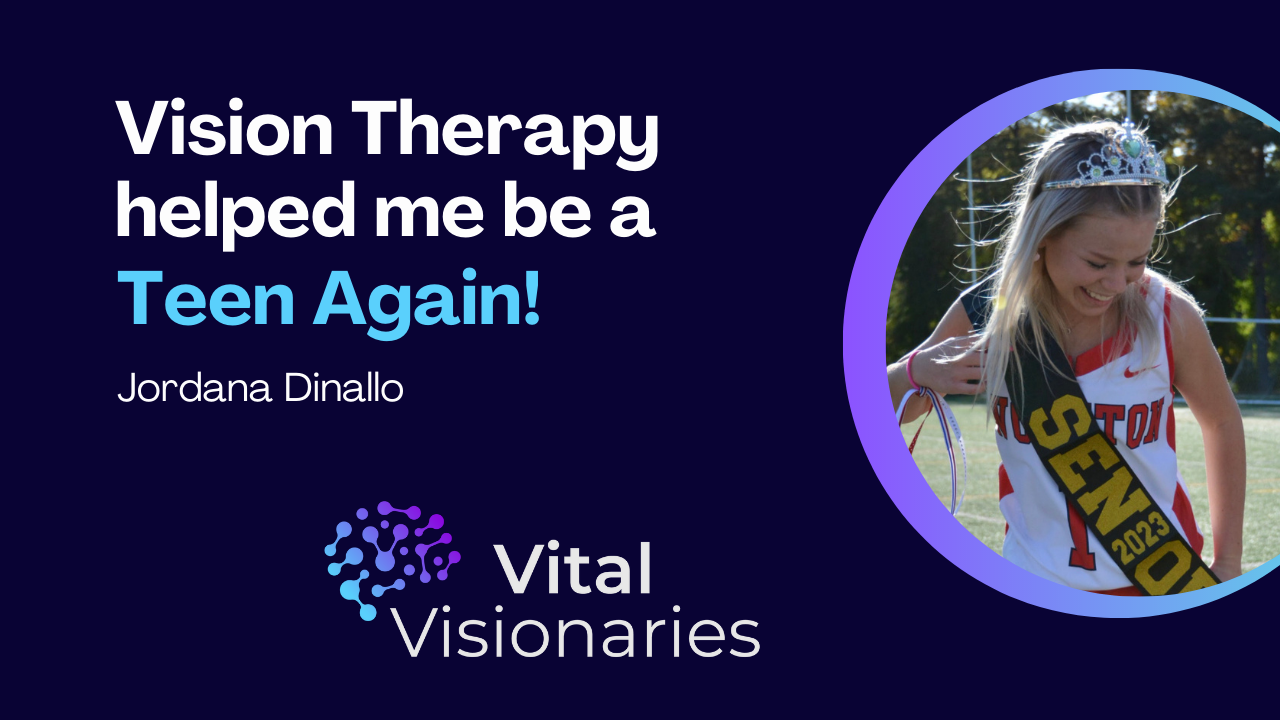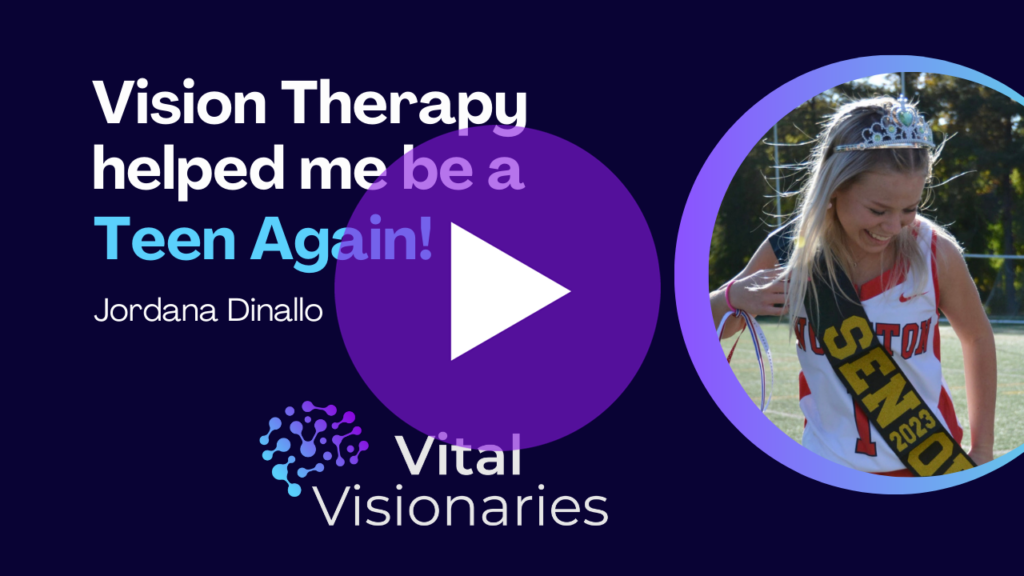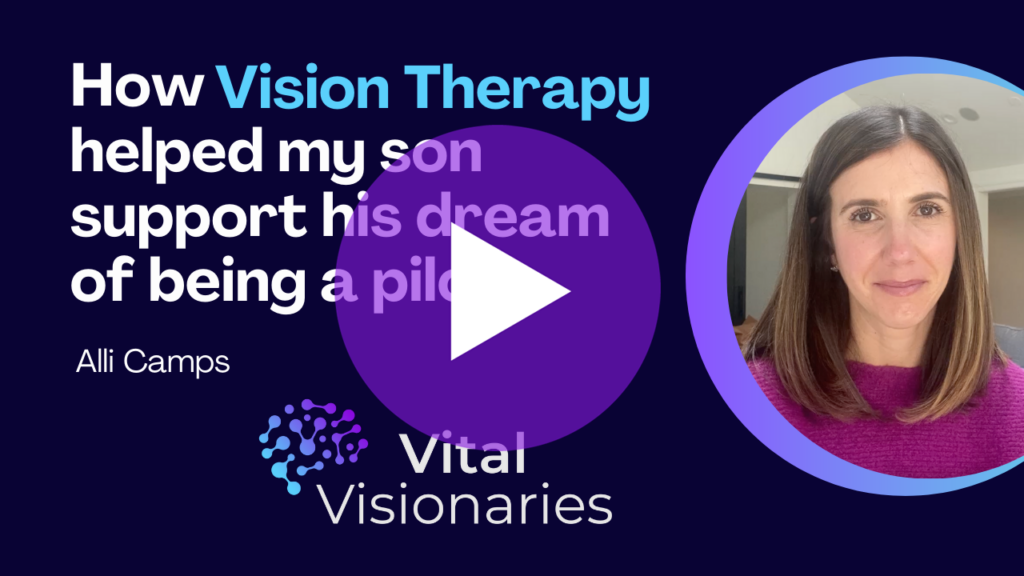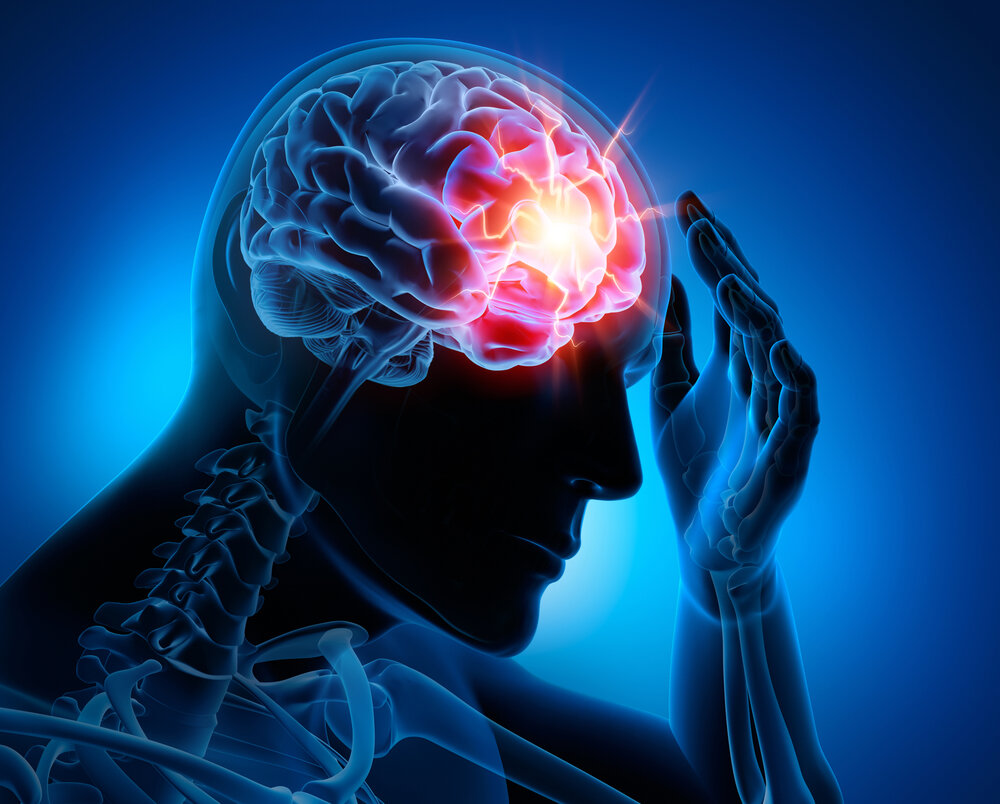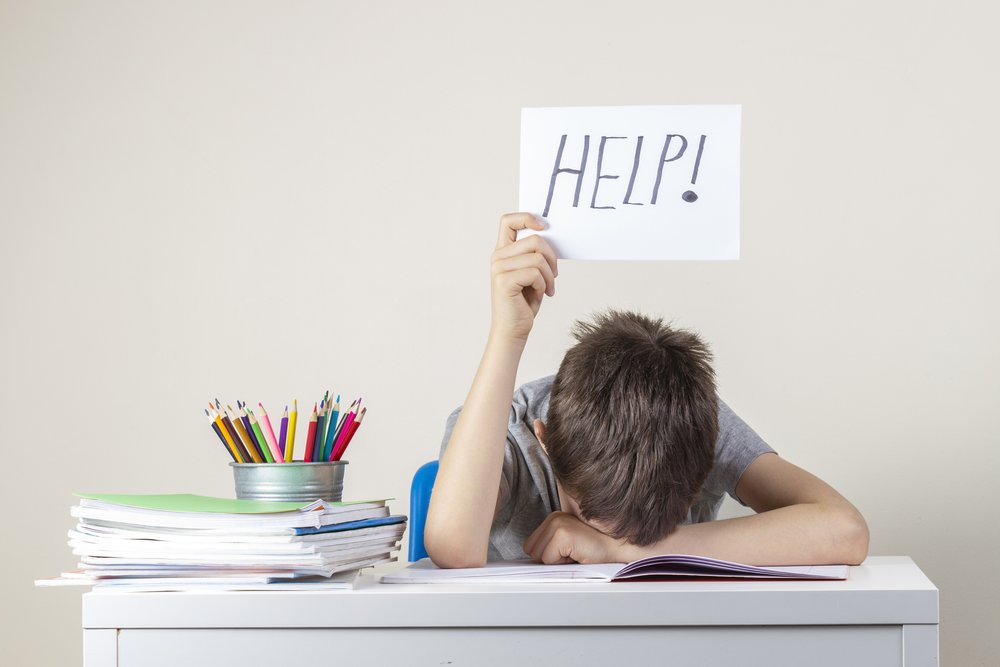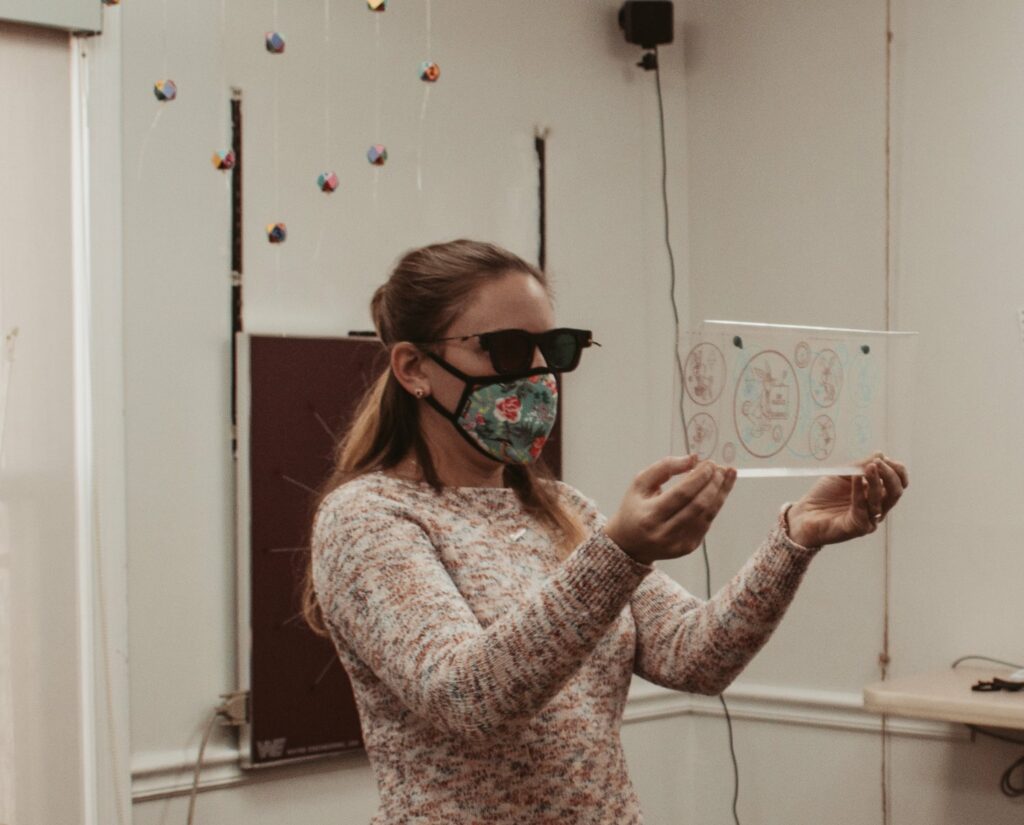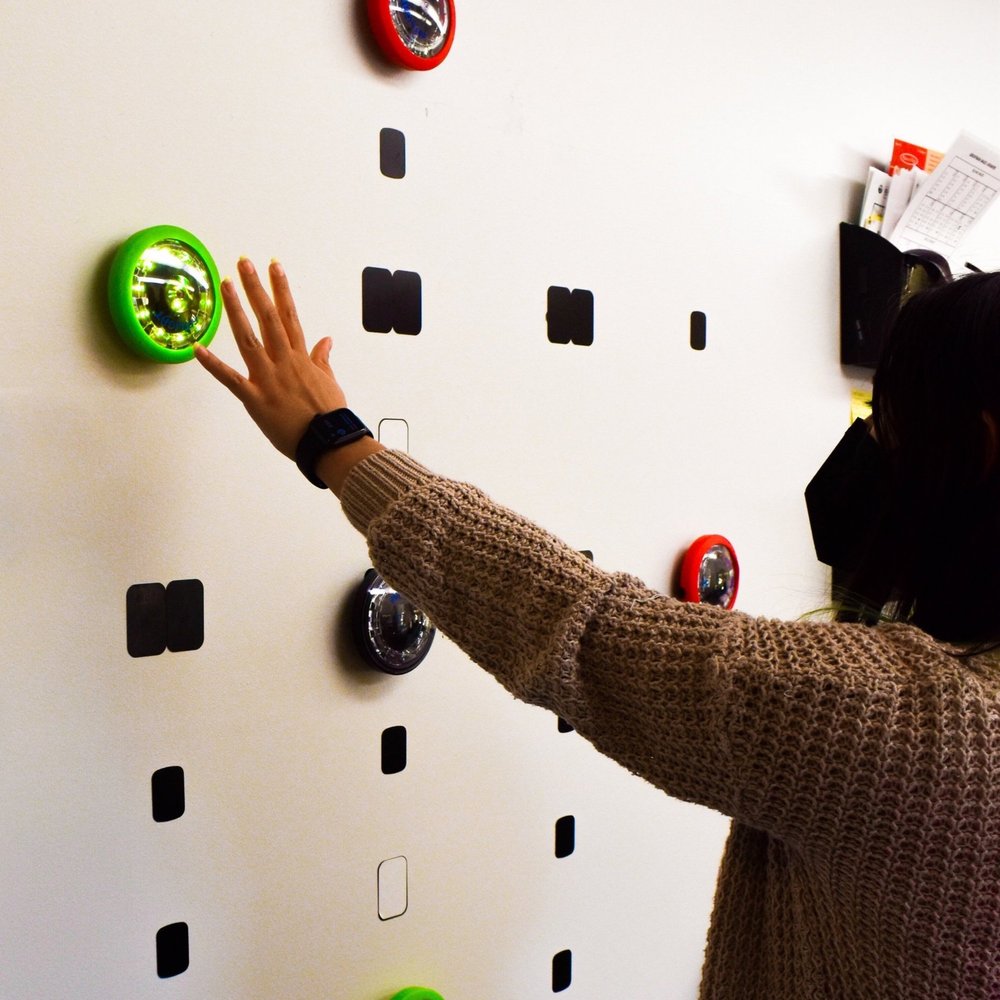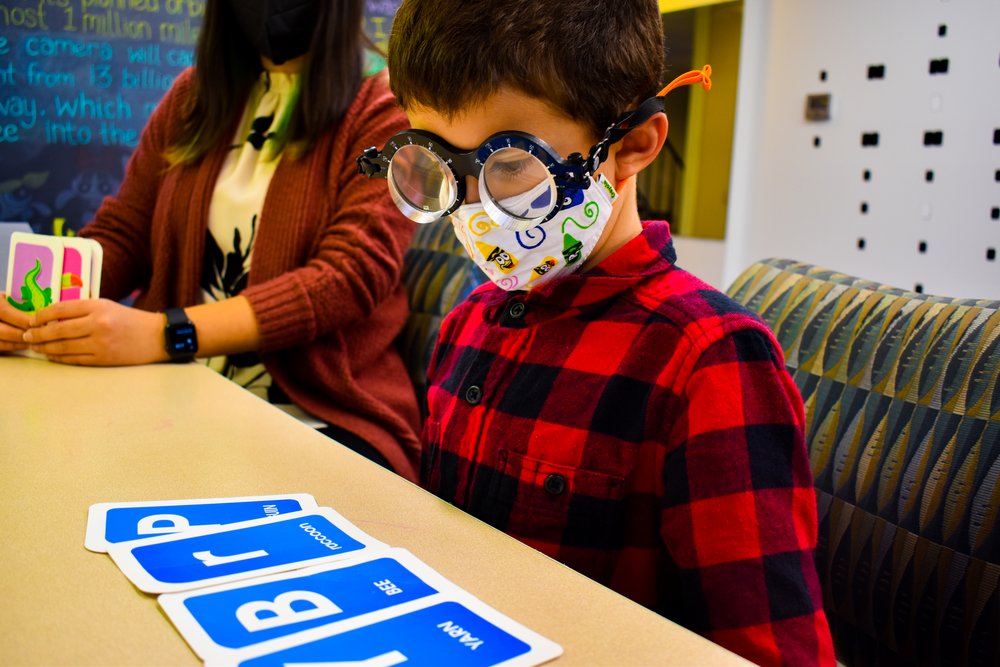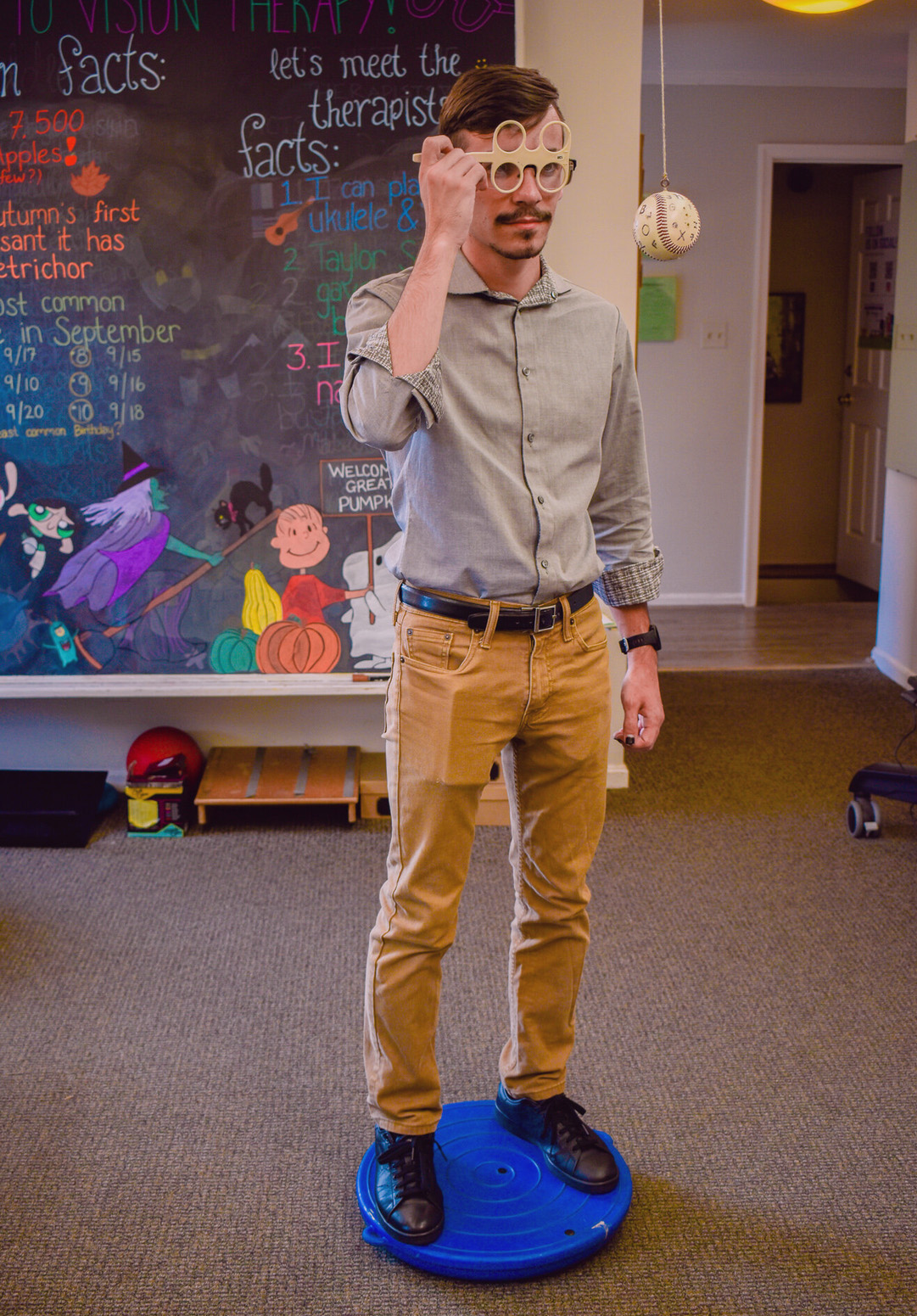Frequently Asked Questions
Initial Evaluation
The initial evaluation consists of two visits. The first visit is a two-hour appointment where there will be thorough diagnostic testing, a sensorimotor evaluation, and a comprehensive eye examination to fully determine the extent of the visual dysfunction. The second visit is a one hour case conference with the doctor to discuss all of the treatment options recommended and determine the most appropriate course of action.
That’s great! Most eye exams look at eyesight and eye health but don’t even begin to scratch the surface at exploring the functional visual skills necessary for reading, learning, or for life. The team at VisionFirst will pick up where the other doctors left off and investigate the symptoms and behaviors to identify the source of problems. Look at an evaluation at Appelbaum Vision to in many cases be considered as an alternate opinion, rather than a second opinion.
Absolutely you can continue to see your family eye doctor! The team at VisionFirst works closely with many other practices and if treatment with us is indicated, you will be referred back once the concerns are addressed.
No, a referral is not needed. While the majority of our patients are referred from outside providers and/or specialists, we do work with many patients as a result of their own research or from word of mouth. Please provide us with any relevant medical records for our review.
Ophthalmologists are doctors of medicine (M.D.) who specialize in surgery and diseases of the eye, typically offering surgical or pharmacological intervention as treatment. Optometrists are doctors of optometry (O.D.) who diagnose and treat ocular disease dictated by the state, but who also are trained more in vision development and in the functional skills involving the eyes. A small percentage of optometrists specialize in Vision Therapy, offering a more comprehensive approach to vision care emphasizing the intricate relationship between the eyes and brain.
Vision Therapy
Vision Therapy = Physical Therapy for the brain through the eyes!Vision Therapy is an individualized program to develop, retrain, or rehabilitate the brain, eyes, and body to work more efficiently together as a team. At VisionFirst, the learning that takes place through this carefully prescribed sequence of procedures is always programmed and supervised by a doctor to ensure optimal quality control. Vision Therapy is recommended after a comprehensive visual system evaluation, based on the results of standardized testing, the needs of the individual, and the presenting signs and symptoms. The use of lenses, prisms, filters, specialized instruments, virtual reality systems, and computer programs are an integral part of Vision Therapy.
Research indicates that office-based Vision Therapy combined with home reinforcement proves to be the most effective treatment model. Numerous options are available at VisionFirst in terms of treatment frequency and duration. While the majority of our patients are relatively local to Metropolitan DC, we do see many patients from out of state or out of country for intensive “boot camp” treatments. We put an emphasis on home training to support what has been learned in office for most cases, but do offer treatment options consisting of solely home, office, and/or teletherapy, and any combination of these, for portions of Vision Therapy.
Vision Therapy can be beneficial for people of all ages! Improve vision related reading and learning problems. The way that eyes move, work together and focus can affect a person’s ability to read, process and understand visual information. Studies have shown that deficiencies in any of these areas can lead to a significant handicap in learning. Vision therapy can help overcome these problems – improving the ability to read and learn. If there is suspicion of a vision problem, the first step is to schedule a comprehensive vision evaluation to examine the visual skills and abilities essential for reading, learning, and life. If indicated, a rehabilitative vision therapy treatment program will be prescribed to meet the individualized goals of the patient and/or family.
Improve vision in a “lazy eye”. It’s never too late to treat a lazy eye!
Amblyopia, or lazy eye as it is commonly called, is a condition where there is a reduction of sight. There are various causes for it. It cannot be corrected with glasses or contact lenses. However, oftentimes, the condition can be greatly improved through vision therapy. And, while for many patients the condition is often undetected for many years, studies show that active vision therapy treatment is effective at any age.
Correct cross or turned eyes
Strabismus is a condition when a person is unable to align both eyes simultaneously under normal vision conditions. Contrary to old wive’s tales, it rarely corrects itself and children do not outgrow it over time. Surgery can sometimes be done to align the eye more closely for a cosmetic fix, but rarely does a complete functional cure occur without the aid of vision therapy. Moreover, by using vision therapy, prism, and/or prescription lenses, the condition can oftentimes be corrected non-surgically. (Even if a child has had surgery for a cosmetic cure, or even multiple surgical interventions, vision therapy is often recommended to help improve the visual function of the eyes.)
Enhance sports performance
Whether you’re a weekend athlete or a serious professional, vision therapy can give you a competitive edge by improving depth perception, hand-and-eye coordination, visual tracking and reaction time.
Aid people after a stroke or brain trauma
Double vision, headaches, blurred vision, eye strain, confusion related to visual tasks, difficulty reading, etc. can result after trauma to the head/brain or after a stroke. Vision therapy combined with co-managed rehabilitative care can increase independence, balance, reduce symptoms, and often enhance the benefits from speech, occupational, and physical therapy.
Myopia (nearsightedness) prevention, control, and reduction programs
Myopia (nearsightedness) can be controlled safely and effectively for a majority of people! This is one of the best kept secrets in healthcare today. Without the risks and expense of experimental surgery, nine out of ten people can slow down their vision from worsening and in many cases actually reduce their prescription. Techniques used include specialized fitting with modern contact lens materials, reducing eye strain, and nutritional counseling to control metabolic risk factors.
Alleviate headaches from visual stress
Muscle contraction “tension” headaches while reading and/or doing deskwork may not be from physical stress. Instead, they may be caused by tired, strained eyes. Vision therapy offers safe, on-going relief – versus a lifetime of medications and side effects.
Help tired eyes in the workplace
Even when their workstation is designed correctly, many patients with 20/20 eyesight and healthy eyes experience blurred or uncomfortable vision when looking at a computer monitor. These symptoms often result from faulty eye teaming and focusing skills. Vision therapy, along with prescription computer lenses, is an effective treatment for these problems.
Improve skills in visually delayed children
Developmental Optometrists collaborate with OT’s to help children with Autism Spectrum Disorders. Vision development is often delayed in children with epileptic disorders, cerebral palsy, autistic behaviors, PDD or attention deficit disorder (ADD). Vision therapy is key for helping children build and integrate their sensory skills for better learning and function in the activities of daily living.
Depends on the insurance. Coverage varies from plan to plan and may depend on the particular diagnoses and explanation of benefits within the plan. Vision therapy is processed under major medical insurance, not under vision plans. As non-participating out of network providers with major medical plans, the administrative team at VisionFirst will work with you to help navigate any appeal process that may occur. We will provide claim forms needed with diagnostic codes, procedure codes, and dates of service already filled out to file for reimbursement. It is important to recognize that any denial from insurance has nothing to do with the need for care.
Orthoptics literally means “straightening of the eyes” and dates back to the 1850s, limited in scope to eye muscle training and the cosmetic straightening of the eyes. Vision Therapy incorporates orthoptics, but has advanced far beyond to include the rewiring and rehabilitation of the eye-brain connections involved in vision and visual information processing. Clinical and research developments in Vision Therapy are closely allied with developments in neuroscience.
Vision problems often can and do interfere with reading and learning. Vision therapy, however, is not a direct treatment for learning disabilities, such as LD, dyslexia, ADD or ADHD. Vision therapy is directed toward resolving the visual problems which interfere with educational instruction and those which often prevent an individual from achieving at their academic potential. Often a multidisciplinary approach to learning disabilities is recommended; and while vision is just one piece to the overall puzzle, it is often a large and crucial piece as the dominant learning sense in the classroom.
You CAN teach an old brain new tricks! There is a common misconception that the critical period for vision development ends at age 8. This is FALSE! Evidence based medicine now confirms that there indeed is neuroplasticity well beyond the childhood years and, in fact, at any age we can treat strabismus and amblyopia for example, and thus improve depth perception. Just ask professor of neurobiology at Mount Holyoke College, Susan R. Barry, Ph.D., who is living proof that you can develop stereopsis as an adult. “Stereo Sue” has authored countless articles, been featured in numerous publications, interviews, and videos, and authored the groundbreaking book, Fixing My Gaze.
Occupational Therapy
Occupational Therapy (OT) is a branch of healthcare that uses the learning from meaningful activities to help people achieve improved functional ability in life’s everyday tasks. The word “occupation” is used because OT’s address the areas of life that occupies a person’s time and the environments they frequent. OT helps people of all ages who have physical, sensory, or cognitive challenges improve participation and performance in the areas where there may be struggle.
OT assists infants, children, and adults who have developmental, physical, coordination, emotional and/or behavioral issues interfering in the performance of their daily life. Consideration of the entire child or adult including their cognitive, physical, spiritual and emotional health is imperative in determining both short term and long terms.
Sensory integration is the ability of the brain to receive, organize and integrate information from the senses and produce an appropriate response to the demands of the environment. The 5 known senses include vision, hearing, smell, taste, and touch. There are actually 5 more senses that are important to our functioning well in life.
They include vestibular (the balance and movement sense), proprioception (the sense that tells us where are body parts are in space through our muscles and joints), pain, temperature, and interoception (the sense of the internal organs to regulate blood pressure, digestion, breathing, hunger, and other functions of the autonomic nervous system). Issues in sensory integration can interfere with an individual’s coordination, behavior, attention, and comfort.
There is a wide range of symptoms involved in SPD. You or your child will not have all symptoms, but may be over-responsive in some sensory areas and under-responsive in others. Some common symptoms include: hyperactivity or distractibility, behavior problems, muscle tone and coordination problems, difficulty in school and/or with schoolwork, speech and language delays, and sensory overload. If we take a closer look you may recognize some of these symptoms:
Sensory Oversensitivity:
Tactile Sensitivity – uncomfortable or negative experience to touch; avoidance of certain touch experiences that can be wet, messy, or perceived as unpleasing but are generally accepted by others; dislikes having hair or face washed; sensitivity to clothes, tags in the shirt, seams on socks, food textures and picky eating; isolation from others
Gravitational Insecurity – a sudden fearfulness when off the ground or on something unstable; avoids jumping, climbing, or activities that are unpredictable in movement; cautious or fearfulness in movement
Movement Sensitivity – carsickness, or dizziness when moving head
Noise Sensitivity – over reaction to loud or unexpected noises that most others could tolerate
Oversensitivity to smell or pain
Difficulty calming self; feeling stressed with sensory overload
Sensory Undersensitivity:
Seeking movement constantly; fidgety; overly active; unable to remain still
Clumsy or uncoordinated movements, may frequently bump into others or things
Overly high tolerance to pain; does not seem to notice sensations others would feel as painful
Constantly touches others or things; craves being touched
May be too rough with other others, does not realize how hard to touch, squeeze, or hug
Does not seem to notice strong odors; unaware of temperature, never cold
Movement and Sensory-based Motor issues:
Issues in postural control, balance and equilibrium
Poor muscle tone and/or posture
Trips and falls easily
Bumps into things
Clumsy, awkward movement
Poor motor planning of new movement
Delayed gross motor skills
Delayed fine motor skills
Poor handwriting
Avoids sports
When someone is having difficulty with self regulation, they may have difficulty modulating and regulating their nervous system and emotions. This can lead to issues in alertness, attention and focus. In children and adults, it may also lead to frustration, anxiety, anger, fatigue from cognitive demands, tantrums, withdrawal, and difficulty in social situations, schoolwork, and avoidance of life activities.
Visual Issues – many vision issues go undiagnosed or can be misdiagnosed as a learning dysfunction. This goes beyond visual acuity. May have trouble eye tracking, maintaining eye contact, an eye turns in or out, difficulty copying from the board, makes reversals with letters, or becomes overly excited with a lot of visual stimuli. Rubs eyes, gets headaches or eyes water after close work or reading. Avoids reading, must read aloud, or loses place when reading.
Behavior – poor self confidence, distractible, difficulty with transitions.
Difficulty chewing or handling utensils.
Muscle Tone – poor posture (standing or sitting), tires easily, stronger or weaker than others.
If someone is having difficulty modulating their self regulation they may get angry easily, become frustrated quickly, get fatigued from cognitive demand, not be able to transition to a new activity or setting very well, may have frequent tantrums, gets “in trouble” often at school or at work, and could dislike and often avoid activities they are aware they can’t handle. Children and adults with self regulation issues may isolate themselves from others, have difficulty in social situations, and avoid life activities.
Occupational Therapists are trained and skilled at identifying the underlying causes for any sensory based or motor difficulty an individual might be having. OT’s perform an evaluation and design specific therapeutic activities that will assist the child or adult to either help overcome these issues and/or create strategies to better deal with them.
We provide an array of sensory-based, motor, and developmental or graded tasks that are specifically designed therapeutic activities to help improve sensory processing, self regulation, and motor control. We use sensory and movement based equipment, motor skills and neurodevelopmental activities, the Alert Program for Self Regulation, Handwriting Without Tears, Therapeutic Listening, Wilbarger Deep Pressure Brushing Protocol, and the Interactive Metronome programs.
Self regulation is the ability to modify our own behavior, emotions, and thoughts depending on the situation we are in. We use the Alert Program for Self Regulation to first increase awareness of your own alert levels, then build sensory strategies to change your alert levels and achieve a “just right” level of alertness throughout the day or for a specific situation. Children have many demands placed on them at an increasingly earlier age than recent years. We can help make them aware of their own self regulation and choose the right strategies to achieve optimal performance on all daily tasks. Adults may need to learn strategies to help them calm or rev up their nervous system to alert, focus, and attend to life’s demands.
Issues in one’s vestibular, proprioceptive, and tactile systems often lead to poor motor coordination. By providing movement and sensory-based exercises on a consistent basis, we can improve coordination by increasing muscle tone and strength, improving equilibrium reactions, decreasing fearfulness in movement, promoting confidence in movement, improving motor planning, and allowing a child or adult to explore their environment at their individual level and build their coordination skills. We find the ‘just right challenge’ for each person’s needs.
We conduct a full evaluation of an infant’s sensory processing, self regulation, postural control, motor coordination, and feeding as indicated. We know an issue in any of these areas can affect their sleep, feeding, behavior, attachment/bonding with the parents, and can prevent the infant from reaching their developmental milestones and their ability to handle life’s demands. We work closely with the infant and parents to provide therapeutic intervention at an early age.
There are various aspects involved in the ability to write and complete homework. We evaluate the upper extremity function and skill level, grasp of a pencil, motor coordination with the pencil, visual motor integration, visual perception, posture at the desk, focus, and screen for possible visual issues. We look carefully at letter formation, directionality, line placement, size consistency, spacing, and organization for writing.
We determine the underlying areas impacting the writing problem and provide therapeutic activities to address the issues and improve handwriting.
Cognitive Fatigue
Coordination issues
Light or noise sensitivity
Visually overloaded easily
Poor quality of sleep
Anxiety
Isolation
Irritability
Inability to handle daily life activities
It is common for those affected with any type of brain injury to have their neural timing and coordination affected. By implementing a computer-based program called Interactive Metronome, we can combine specifically designed motor exercises to be performed in sync with a metronome beat. Treatment with this program can improve attention, motor skills, cognition, behavior, quality of sleep, and can overall better synchronize timing in the brain. We also provide movement based activities when needed to enhance performance, coordination and daily life activities. Activities of daily living including planning, organization, scheduling are helpful in daily living and quality of life. Sensory counseling, self regulation strategies, and sensory-based therapeutic activities are useful for adults with these issues.
We provide sensory-based counseling to our patients that teaches new strategies to overcome or best deal with sensory issues in their daily lives.
Appelbaum Vision was the first practice in the country to offer both Vision Therapy and Occupational Therapy and is proud to continue to be considered the gold standard of integrating these fields. We provide the highest quality of Optometric Eye Care, Vision Therapy and Occupational Therapy in the same practice. Our history of working together as a team allows us to provide a comprehensive and holistic approach to vision, movement, and development for both children and adults.
Book An Evaluation
Contact us now to learn how you can book a vision evaluation and get started on your journey towards optimal vision.


